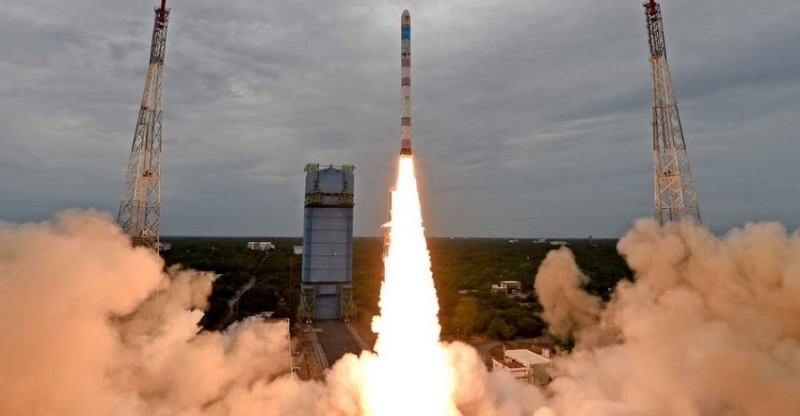
Sriharikota: The Indian Space Research Organisation (ISRO) successfully launched an earth observation satellite on Friday, marking the final developmental flight of its Small Satellite Launch Vehicle (SSLV-D3). This launch underscores ISRO's continuous advancements in satellite technology and positions its SSLV-D3 as a key player in satellite deployment.
This mission follows ISRO's previous SSLV-D2-EOS-07 launch in February 2023, and is the third launch in 2024. Earlier in the year, ISRO also launched the PSLV-C58/XpoSat mission in January and the GSLV-F14/INSAT-3DS mission in February.
The SSLV-D3, ISRO’s smallest and most compact rocket, stands at 34 meters tall. Originally set to launch on August 15 at 9:17 AM IST, the mission was rescheduled and successfully took off from the Satish Dhawan Space Centre on August 16 at 9:19 AM IST.
Mission Objectives
The SSLV-D3-EOS-08 mission had several primary goals, including the design and development of a microsatellite, the creation of payload instruments compatible with this satellite, and the integration of new technologies to support future satellite missions. This mission also marked the completion of the developmental phase for SSLV, a rocket that can carry satellites up to 500 kg into Low Earth Orbit (LEO), at altitudes of up to 500 km above Earth.
The successful launch of this smallest rocket paves the way for NewSpace India Ltd, ISRO’s commercial arm, to use SSLV for future commercial launches, offering a more cost-effective option for satellite deployment.
Mission Specifications
The Earth Observation Satellite launched in this mission is built on the Microsat/IMS-1 bus and carries three main payloads: an Electro Optical Infrared Payload (EOIR), a Global Navigation Satellite System-Reflectometry payload (GNSS-R), and a SiC UV Dosimeter.
The spacecraft weighs approximately 175.5 kg and has a mission life of one year. It generates around 420 watts of power and interfaces seamlessly with the SSLV-D3/IBL-358 launch vehicle.
EOIR Payload: Designed to capture images during both day and night in the Mid-Wave and Long-Wave IR bands, this payload is essential for satellite-based surveillance, disaster monitoring, environmental observations, fire and volcanic activity detection, and monitoring industrial disasters.
GNSS-R Payload: Demonstrating the use of GNSS-R-based remote sensing, this payload focuses on ocean surface wind analysis, soil moisture assessments, cryosphere studies in the Himalayas, flood detection, and inland waterbody monitoring.
SiC UV Dosimeter: This payload monitors UV radiation for the Crew Module in ISRO's upcoming Gaganyaan Mission. It also acts as a high-dose alarm sensor for gamma radiation, ensuring safety during space missions.
India Names Two Astronauts for Axiom-4 Mission to International Space Station
India To Launch Indigenous Kamikaze Drones Ahead of Independence Day